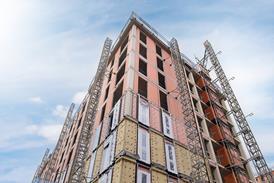Catalan architect Enric Miralles is to meet an all-party body on Wednesday to discuss whether to accept a building in line with his design or a radically scaled-back version.
The Miralles version, designed to RIBA Stage D, includes about 20 options that will improve the life-cycle cost of the building and keep faith with its green credentials, but at an increased initial cost.
Another version keeps to the planned £50m construction budget but at the expense of key aspects of the design and a commitment to use Scottish materials.
The project team, including Bovis, QS Davis Langdon & Everest and Miralles' UK partner RMJM, has been working hard to keep the costs to £50m, but will now ask MSPs to make tough choices themselves.
A source at the Scottish Office, which has been acting as client for the project, said the cost-cutting options, which would save £5m-10m and keep the project within the £50m budget, included:
Inflation, expected to continue at 3% until 2001, is already expected to push the cost of the building up, but the project is now turning into a test case for life-cycle costing.
The project team was unavailable for comment, but industry sources said it had followed Treasury guidance in proving that a higher initial cost could lead to long-term savings. It has also followed the Scottish Office's brief to the letter.
The decisions on the building's future will be made by a body chaired by Liberal Democrat Sir David Steel.
Sir David is acting after MSPs Donald Gorrie and Margo McDonald tabled a motion calling for a review of the project and alleging that its overall cost had risen to more than £110m. This includes the £27.6m cost of renovating temporary buildings for the parliament, £10.5m for fees, £10.6m for VAT, £4m for the purchase of its site, £3.5m for furnishings and £4m for IT. A Scottish Office spokesman said reports that the project cost had doubled were "mischief-making".
He said the project team was still working to a budget of £50m, exclusive of VAT and fees.
Industry sources said this budget was likely to provide a "perfectly acceptable base-build option, but not a building with the lowest long-term cost".























